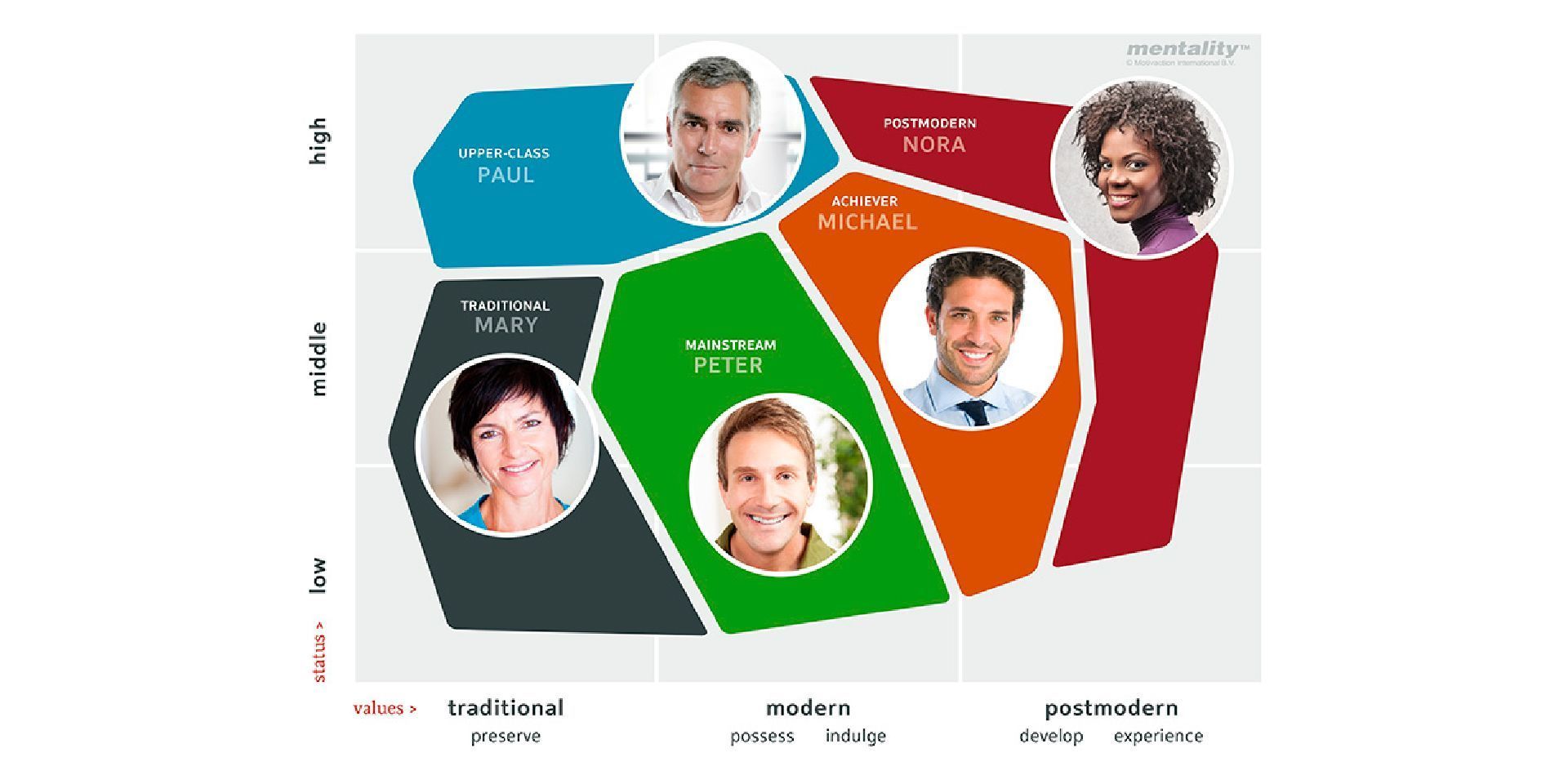Value models for the leisure sector.

Based on both the Mentality and BSR models discussed in the previous blog, a specific translation has been made for the leisure/tourism sector.
In this series of blogs, marketing professional Edwin van der Woude of Het Regiobureau takes us into the world of focus groups, and what we can learn from them from the leisure and travel industry. In previous posts, we have told about the importance of target group segmentation and about the models that can be used for this purpose. In this post, we will make the translation to the tourism/leisure sector.
Mentality International; discover the different values for holidays and leisure
The Netherlands Board of Tourism and Conventions (NBTC), together with Motivaction, has created the Mentality International model. This model distinguishes five personas: Upperclass Paul, Postmodern Nora, Achiever Michael, Mainstream Peter and Traditional Mary. All five with very different values and therefore different needs with regard to how they spend their free time/holidays.
For instance, Nora more often goes to destinations unknown to her and preferably to places her friends have not yet been. Mary, on the other hand, prefers going to places familiar to her. She prefers to go to the same familiar campsite at the same time every year. Michael is all about fun, looking for destinations where he can have active fun: mountain biking, going out in a city, the Heineken experience... He is not that interested in culture (history), while Nora is. Nora usually finds Michael a bit "flat" and "quick", while Michael finds Nora a bit strange and principled. You understand that the interpretation of your marketing communication throughout the Experience Journey and also your offer, depends heavily on the target audience you have chosen. You can hit the bull's eye, but you can also miss the mark completely!

The advantage of this model is that it was developed in an international context. And so it is also good to use in working with, for example, the German market.
Would you like to know more about the personas in the Mentality International model. A nice passport has been made of each group that gives you all kinds of insights1:
Lifestyle finder; what do you do in your free time?
Based on the BSR model, the Lifestyle Finder model was developed especially for the tourism sector. This model distinguishes 7 segments.

Designations have been chosen for the segments in the Lifestyle Finder model to indicate what the respective group is looking for in its leisure time: adventure, fun, harmony, connection, tranquillity, insight or style. No one is 100% Adventure or Rest Seeker. It may even depend on the company or the time of year. For instance, someone in the company of their friends can be a typical Fun Seeker and do a weekend of Formula 1. The same person, when choosing a summer holiday with his family, finds it important that everyone has a good time and can be typified more as Harmony Seeker.
For the following posts, we choose the Lifestyle Finder as a basis, but the Mentality model is also very good to use. And although the basis of the Mentality and BSR models differ, the personas in the different models can be compared and can therefore definitely be used in combination. For example, when you want to target both the Dutch and German markets. For instance, you can characterise Nora as Adventure seeker. Michael as Fun Seeker (with a bit of Style Seeker). Peter has most in common with the Harmony and Connection seeker, Mary is a typical Tranquillity seeker and Paul a Style and Insight seeker.
So! Enough theory. What do you actually get out of it? We're going to tell you in the next blog. Depending on your choice of one or more target groups, you need to tailor your Experience Journey and your product offering to the target group(s). How you can do that as a tourism entrepreneur, we will show you in the following posts.
Tip: self-test
For both models there is a self-test, which allows you to determine which segment you yourself belong to. Not only interesting and fun, but also very useful. This way, you also know for yourself whether you find it easy or difficult to empathise with the wishes and needs of your target group. A common 'bias' is that a marketer sees himself as a target group member and makes choices based on his own interpretation. When he or she does not belong to the target group, this is where things go wrong when making choices! Useful then is to know who (e.g. which employees) do belong to the target group and involve them in making choices.
Mentality: motivaction.co.uk/mentality/de-mentality-test
Lifestyle finder: samr.co.uk/ennis/surveys/lifestyle finder/

